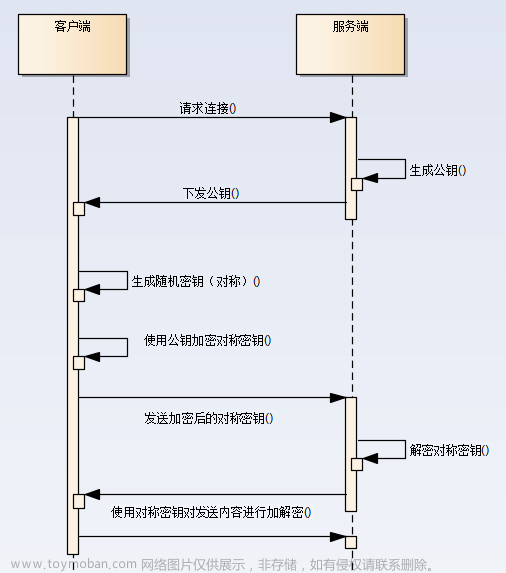WebSocket
WebSocket协议是基于TCP的一种新的网络协议,它实现了浏览器与服务器全双工(full-duplex)通信,允许服务器主动发送信息给客户端
优点及作用
Http协议的弊端:
- Http协议为半双工协议。(半双工:同一时刻,数据只能在客户端和服务端一个方向上传输)
- Http协议冗长且繁琐
- 易收到攻击,如长轮询
- 非持久化协议
WebSocket的特性:
- 单一的 TCP 连接,采用全双工模式通信
- 对代理、防火墙和路由器透明
- 无头部信息和身份验证
- 无安全开销
- 通过 ping/pong 帧保持链路激活
- 持久化协议,连接建立后,服务器可以主动传递消息给客户端,不再需要客户端轮询
实现原理
在实现Websocket连线过程中,需要通过浏览器发出Websocket连线请求,然后服务器发出回应,这个过程通常称为握手 。在 WebSocket API,浏览器和服务器只需要做一个握手的动作,然后,浏览器和服务器之间就形成了一条快速通道。两者之间就直接可以数据互相传送。在此WebSocket 协议中,为我们实现即时服务带来了两大好处:
1.Header 互相沟通的Header是很小的-大概只有 2 Bytes
GET ws://localhost:5050/websocket HTTP/1.1
Host: localhost:5050
Connection: Upgrade
Pragma: no-cache
Cache-Control: no-cache
Upgrade: websocket
Origin: http://localhost:63342
Sec-WebSocket-Version: 13
User-Agent: Mozilla/5.0 (Windows NT 10.0; WOW64) AppleWebKit/537.36 (KHTML, like Gecko) Chrome/61.0.3163.79 Safari/537.36
Accept-Encoding: gzip, deflate, br
Accept-Language: zh-CN,zh;q=0.8
Cookie: Idea-d796403=9d25c0a7-d062-4c0f-a2ff-e4da09ea564e
Sec-WebSocket-Key: IzEaiuZLxeIhjjYDdTp+1g==
Sec-WebSocket-Extensions: permessage-deflate; client_max_window_bitsSec-WebSocket-Key 是随机生成的,服务端会使用它加密后作为 Sec-WebSocket-Accept 的值返回;Sec-WebSocket-Protocol 是一个用户定义的字符串,用来区分同URL下,不同的服务所需要的协议;Sec-WebSocket-Version 是告诉服务器所使用的Websocket Draft(协议版本)
2.Server Push 服务器的推送,服务器不再被动的接收到浏览器的请求之后才返回数据,而是在有新数据时就主动推送给浏览器。
HTTP/1.1 101 Switching Protocols
upgrade: websocket
connection: Upgrade
sec-websocket-accept: nO+qX20rjrTLHaG6iQyllO8KEmA=经过服务器的返回处理后连接握手成功,后面就可以进行TCP通讯,WebSocket在握手后发送数据并象下层TCP协议那样由用户自定义,还是需要遵循对应的应用协议规范…
WebSocket服务
定义初始化参数
public interface Init {
int PORT = 5050;
String HOST = "localhost";
String WEB_SOCKET_URL = String.format("ws://%s:%d/websocket", HOST, PORT);
}1.创建一个WebSocketServer类,然后重写初始化事件(基本上与上一章编写的文件下载类似,都需要依赖HTTP的解码器与通信支持的模块…)
public class WebSocketServer {
private static final Logger LOG = Logger.getLogger(WebSocketServer.class.getName());
public static void run(int port) throws Exception {
EventLoopGroup bossGroup = new NioEventLoopGroup();
EventLoopGroup workerGroup = new NioEventLoopGroup();
try {
ServerBootstrap bootstrap = new ServerBootstrap();
bootstrap.group(bossGroup, workerGroup)
.channel(NioServerSocketChannel.class)
.childHandler(new ChannelInitializer<Channel>() {
@Override
protected void initChannel(Channel channel) throws Exception {
ChannelPipeline pipeline = channel.pipeline();
pipeline.addLast("http-codec", new HttpServerCodec()); // Http消息编码解码
pipeline.addLast("aggregator", new HttpObjectAggregator(65536)); // Http消息组装
pipeline.addLast("http-chunked", new ChunkedWriteHandler()); // WebSocket通信支持
pipeline.addLast("handler", new WebSocketServerHandler()); // WebSocket服务端Handler
}
});
Channel channel = bootstrap.bind(port).sync().channel();
LOG.info("WebSocket 已经启动,端口:" + port + ".");
channel.closeFuture().sync();
} finally {
bossGroup.shutdownGracefully();
workerGroup.shutdownGracefully();
}
}
public static void main(String[] args) throws Exception {
WebSocketServer.run(Init.PORT);
}
}2.创建WebSocketServerHandler,重写以下三个方法
- messageReceived:消息接收,判断请求消息来源,从而做不同处理
- channelReadComplete:
Channel读取完毕后执行的回调操作 - exceptionCaught:异常后回调操作
public class WebSocketServerHandler extends SimpleChannelInboundHandler<Object> {
private static final Logger LOG = Logger.getLogger(WebSocketServerHandler.class.getName());
private WebSocketServerHandshaker handshaker;
@Override
public void messageReceived(ChannelHandlerContext ctx, Object msg)
throws Exception {
// 传统的HTTP接入
if (msg instanceof FullHttpRequest) {
handleHttpRequest(ctx, (FullHttpRequest) msg);
}
// WebSocket接入
else if (msg instanceof WebSocketFrame) {
handleWebSocketFrame(ctx, (WebSocketFrame) msg);
}
}
@Override
public void channelReadComplete(ChannelHandlerContext ctx) throws Exception {
ctx.flush();
}
@Override
public void exceptionCaught(ChannelHandlerContext ctx, Throwable cause)
throws Exception {
cause.printStackTrace();
ctx.close();
}
}第一次握手请求是由HTTP协议承载来完成握手请求操作文章来源:https://www.toymoban.com/news/detail-697306.html
3.定义handleHttpRequest与sendHttpResponse方法,处理HTTP的请求,首先判断是否为WebSocket握手请求,如果不是则抛出错误消息文章来源地址https://www.toymoban.com/news/detail-697306.html
private void handleHttpRequest(ChannelHandlerContext ctx, FullHttpRequest req) throws Exception {
// 如果HTTP解码失败,返回HHTP异常
if (!req.decoderResult().isSuccess() || (!"websocket".equals(req.headers().get("Upgrade")))) {
sendHttpResponse(ctx, req, new DefaultFullHttpResponse(HTTP_1_1,
BAD_REQUEST));
return;
}
// 构造握手响应返回,本机测试
WebSocketServerHandshakerFactory wsFactory = new WebSocketServerHandshakerFactory(Init.WEB_SOCKET_URL, null, false);
handshaker = wsFactory.newHandshaker(req);
if (handshaker == null) {
WebSocketServerHandshakerFactory.sendUnsupportedVersionResponse(ctx.channel());
} else {
handshaker.handshake(ctx.channel(), req);
}
}
private static void sendHttpResponse(ChannelHandlerContext ctx, FullHttpRequest req, FullHttpResponse res) {
// 返回应答给客户端
if (res.status().code() != 200) {
ByteBuf buf = Unpooled.copiedBuffer(res.status().toString(), CharsetUtil.UTF_8);
res.content().writeBytes(buf);
buf.release();
setContentLength(res, res.content().readableBytes());
}
// 如果是非Keep-Alive,关闭连接
ChannelFuture f = ctx.channel().writeAndFlush(res);
if (!isKeepAlive(req) || res.status().code() != 200) {
f.addListener(ChannelFutureListener.CLOSE);
}
}到了这里,关于Netty 教程 – 实现WebSocket通讯的文章就介绍完了。如果您还想了解更多内容,请在右上角搜索TOY模板网以前的文章或继续浏览下面的相关文章,希望大家以后多多支持TOY模板网!











